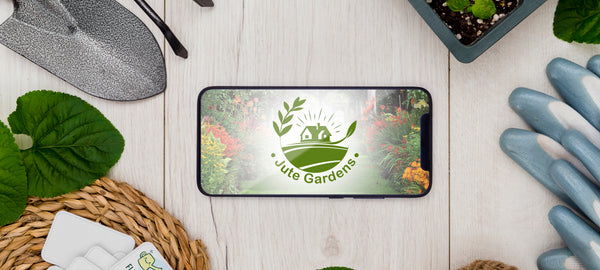
What Are the Maintenance Requirements for a Jute Vertical Garden?
A jute vertical garden is a unique and attractive way to grow plants, but it requires regular maintenance to keep it healthy and thriving. Jute, a type of natural fiber, is often used as the base material for these vertical gardens, providing strong and sturdy support for the plants to grow on. These gardens are ideal for those who want to grow a variety of plants in a small space, such as apartment balconies, patios, or indoor spaces.
Maintenance Requirements for a Jute Vertical Garden
The maintenance requirements for a jute vertical garden involve watering, pruning, fertilizing, pest control, soil maintenance, lighting, cleaning, replacing plants, and inspecting for damage.
However, it’s important to understand the maintenance requirements for a jute vertical garden so that you can ensure that your plants are healthy and vibrant. This article will go over the key maintenance tasks that you need to perform on your jute vertical garden to keep it healthy and beautiful.
Watering
One of the most important maintenance tasks for a jute vertical garden is watering. It’s crucial to keep the plants well-watered to ensure that they are healthy and growing properly. However, you need to be careful not to over-water your plants as this can lead to root rot and other problems. The frequency of watering will depend on the type of plants you are growing, the environment they are growing in, and the size of your garden. As a general rule, you should water your plants deeply once a week, and check the soil moisture levels regularly to ensure that the plants are not drying out.
If you are worried about your jute vertical garden leaking indoors, we recommend planting succulents or other plants that require little water. Alternatively, use your vertical garden outdoors.
Pruning
Pruning is another important maintenance task for a jute vertical garden. Regular pruning helps to promote healthy growth, remove dead or damaged leaves and branches, and encourage the plant to produce more flowers or fruits. It’s important to remove dead leaves and branches from your plants regularly, as they can harbor pests and diseases that can harm your garden. You should also trim back any branches that are growing too long, or that are crossing over other branches.
Fertilizing
Fertilizing is essential to keep your jute vertical garden healthy and thriving. The type of fertilizer you use will depend on the type of plants you are growing and the stage of their growth. It’s a good idea to use a slow-release fertilizer that will provide a steady source of nutrients to your plants throughout the growing season. You should also consider adding compost or other organic matter to your garden to help improve the soil quality and provide additional nutrients for your plants.
Pest control
Pests can be a big problem for a jute vertical garden, so it’s important to monitor your plants regularly for signs of pest damage. If you see any pests, you should take steps to control them immediately, as they can quickly spread and damage your plants. You can use natural pest control methods, such as companion planting or releasing beneficial insects, or you can use chemical pesticides if necessary. However, it’s always best to use natural methods whenever possible to protect the health of your garden.
Soil maintenance
Maintaining the quality of the soil in your jute vertical garden is essential to keep your plants healthy. Regularly adding compost, mulch, or other organic matter to your garden will help to improve the soil quality and provide the necessary nutrients for your plants to grow. You should also monitor the soil pH levels and adjust them as necessary to ensure that your plants are growing in an environment that is conducive to their health.
Light
Light is also an important factor in the maintenance of a jute vertical garden. Most plants need adequate light to grow and produce flowers or fruits. If your garden is located in a low-light area, you may need to provide additional light with grow lights. It’s important to monitor the light levels in your garden regularly to ensure that your plants are getting enough light, and adjust the positioning of your garden as necessary to optimize the light exposure.
Cleaning
Regular cleaning is also important for a jute vertical garden. Dust and debris can accumulate on the leaves of your plants, reducing their ability to photosynthesize and impacting their health. You should clean the leaves of your plants regularly with a soft cloth or brush, and remove any dead leaves or debris from the bottom of your garden. This will help to prevent the buildup of mold or other pests that can harm your plants.
Click here for an article on cleaning your plants at home.
Replacing Plants
Over time, some of the plants in your jute vertical garden may die or become overgrown and need to be replaced. This is a normal part of gardening, and it’s important to have a plan in place for replacing these plants. You can either purchase new plants or propagate existing ones to replace those that have died. This will help to keep your garden looking fresh and vibrant.
Inspecting for Damage
Regularly inspecting your jute vertical garden for damage is also important. Look for signs of damage from pests or diseases, and take action as necessary to control these problems. You should also inspect the jute material for signs of wear or tear, and repair or replace it as necessary to ensure that it remains strong and sturdy.
Enjoying your Garden
Lastly, don’t forget to enjoy your jute vertical garden! This type of garden is a great way to bring a little bit of nature into your home, and it can be a source of relaxation and enjoyment. Take the time to sit and admire your garden, and enjoy the beauty and tranquility that it brings to your life.
Conclusion
A jute vertical garden is a unique and attractive way to grow plants, but it requires regular maintenance to keep it healthy and thriving. By following these maintenance tasks, you can ensure that your jute vertical garden is healthy and beautiful and that it provides you with years of enjoyment. Whether you are growing herbs, vegetables, flowers, or other plants, a jute vertical garden is a great way to bring a little bit of nature into your home and enjoy the beauty of gardening.
Frequently Asked Questions
Q: What are the benefits of a jute vertical garden?
A: Jute vertical gardens offer many benefits, including increased growing space, improved air quality, and a unique and attractive way to grow plants. They are also easy to care for and maintain.
Q: How often should I water my jute vertical garden?
A: The frequency of watering will depend on the type of plants you are growing and the conditions in your home. As a general rule, you should water your jute vertical garden once or twice a week, or as needed to keep the soil moist but not soaking wet.
Q: What type of soil should I use in my jute vertical garden?
A: Use a high-quality, well-draining potting soil that is suitable for the type of plants you are growing. You can also add organic matter, such as compost or worm castings, to improve the fertility and structure of your soil.
Q: How much light does my jute vertical garden need?
A: The amount of light your jute vertical garden needs will depend on the type of plants you are growing. Most plants need at least six hours of bright, indirect light per day, and some may require more.
Q: What should I do if my plants aren’t getting enough light?
A: If your plants aren’t getting enough light, you can try moving your jute vertical garden to a brighter location, or supplementing the natural light with grow lights.
Q: How often should I fertilize my jute vertical garden?
A: The frequency of fertilizing will depend on the type of plants you are growing and the fertility of your soil. As a general rule, you should fertilize your jute vertical garden every two to four weeks during the growing season, using a balanced, water-soluble fertilizer.
Q: How often should I clean my jute vertical garden?
A: Regular cleaning is important for a jute vertical garden. You should clean the leaves of your plants regularly with a soft cloth or brush, and remove any dead leaves or debris from the bottom of your garden.
Q: What should I do if I need to replace plants in my jute vertical garden?
A: Over time, some of the plants in your jute vertical garden may die or become overgrown and need to be replaced. You can either purchase new plants or propagate existing ones to replace those that have died.
Q: How often should I inspect my jute vertical garden for damage?
A: Regularly inspecting your jute vertical garden for damage is important. Look for signs of damage from pests or diseases, and take action as necessary to control these problems. You should also inspect the jute material for signs of wear or tear, and repair or replace it as necessary.
Q: What is the best way to enjoy my jute vertical garden?
A: Enjoying your jute vertical garden is easy! Take the time to sit and admire your garden, and enjoy the beauty and tranquility that it brings to your life.


